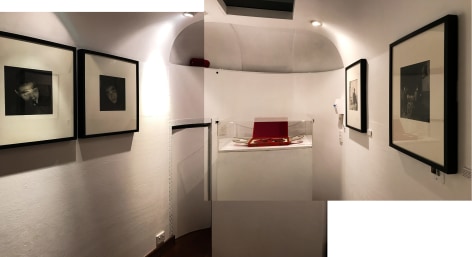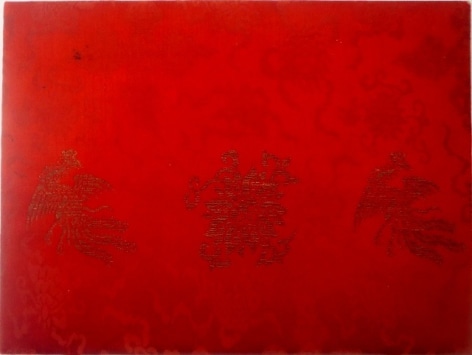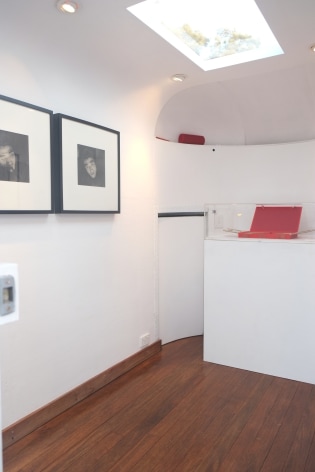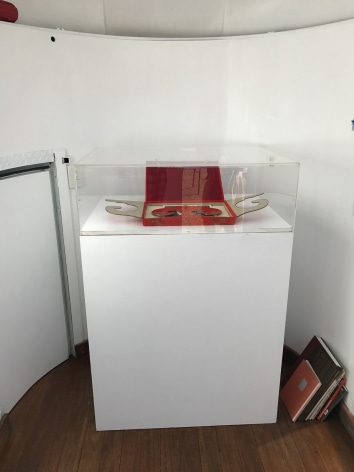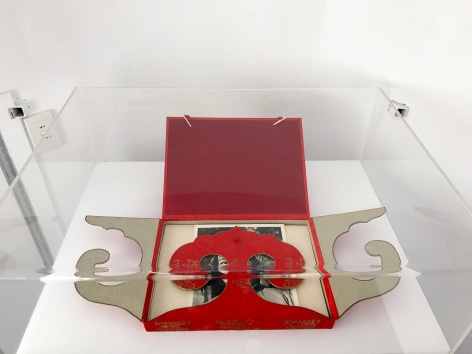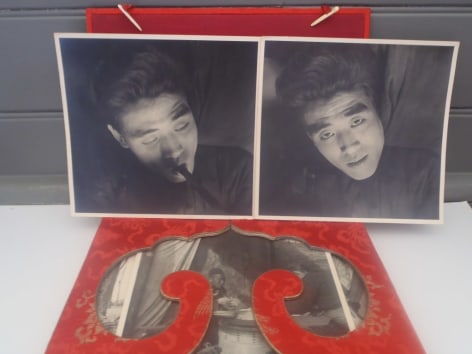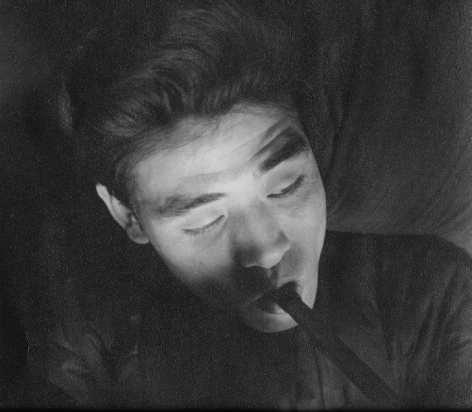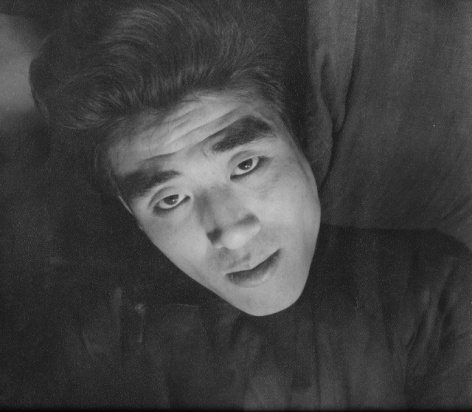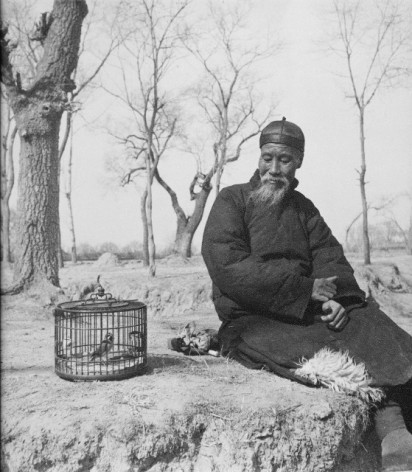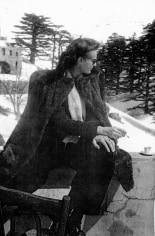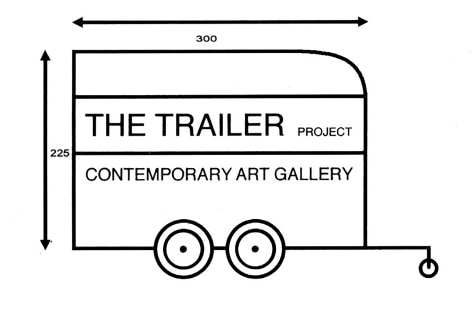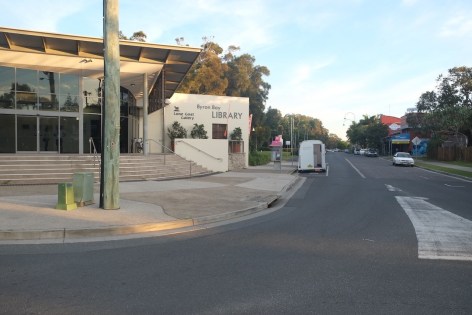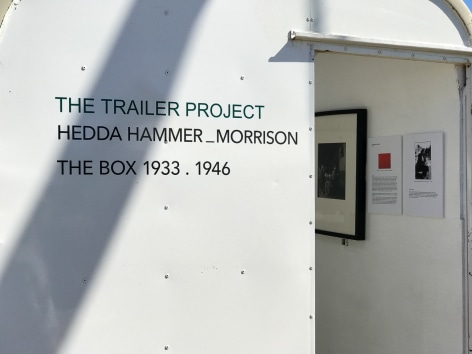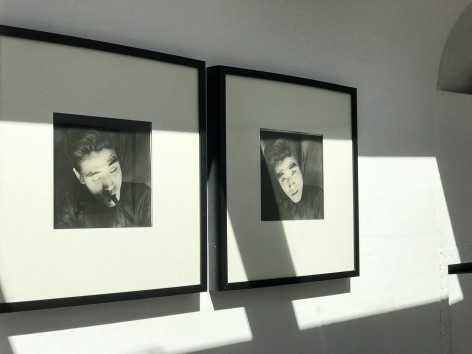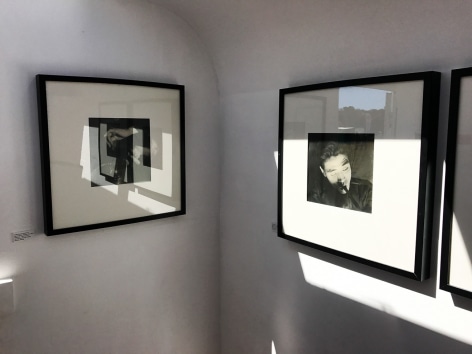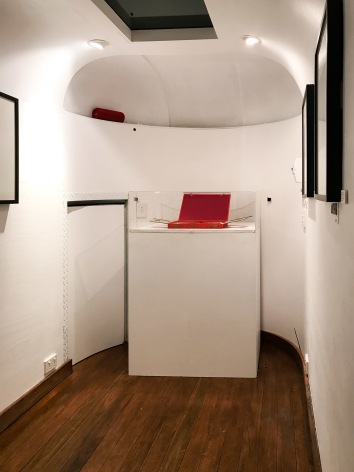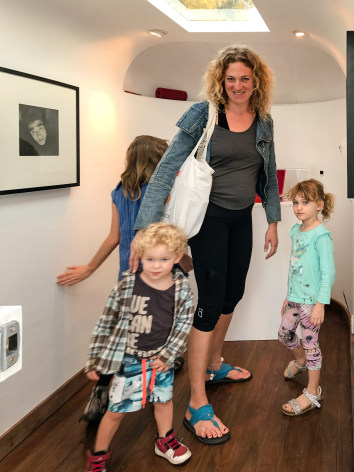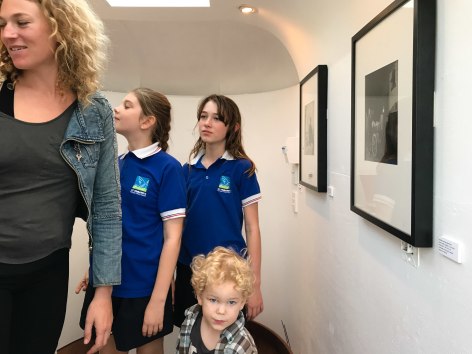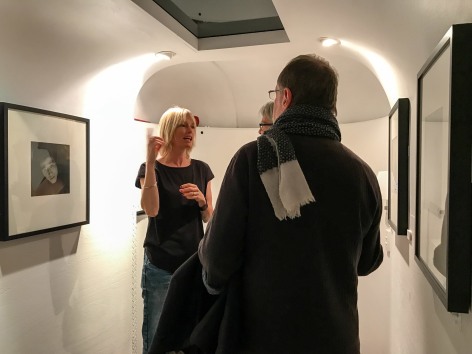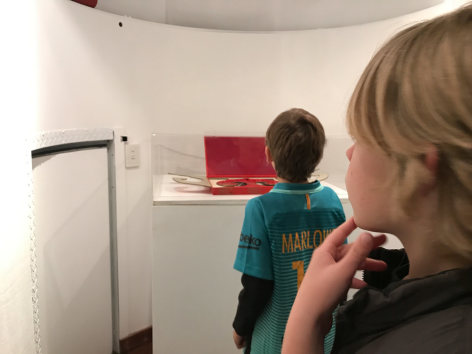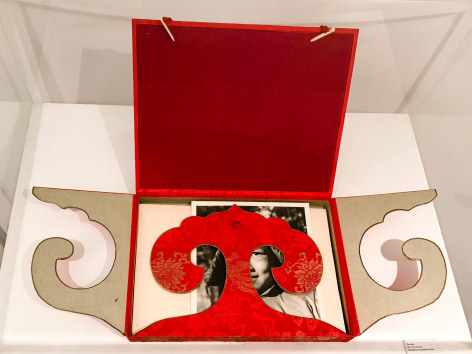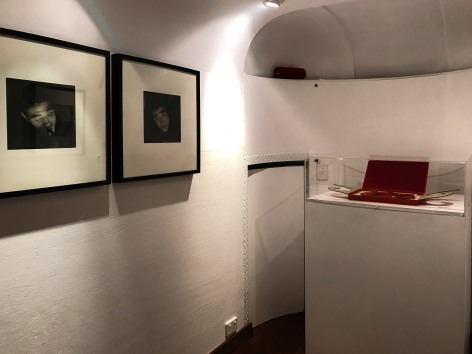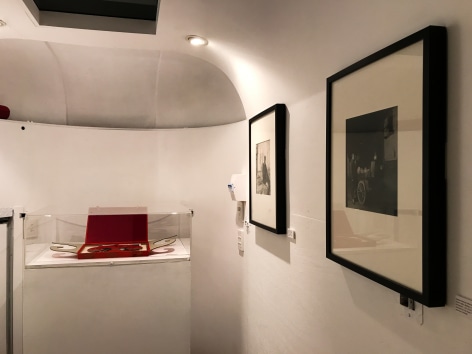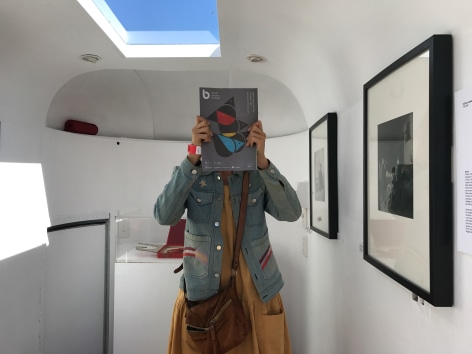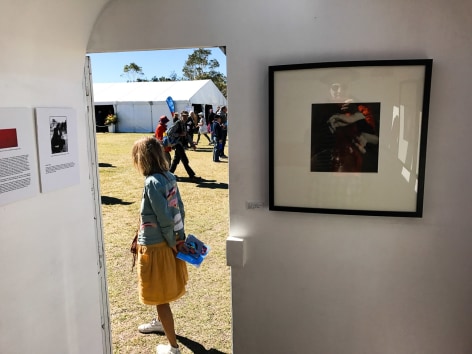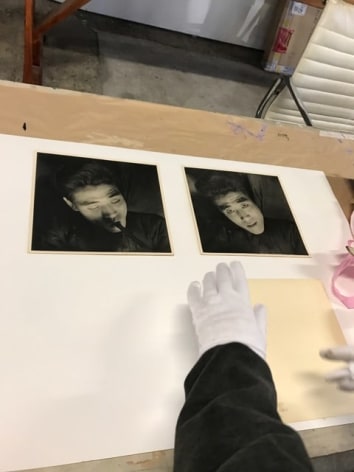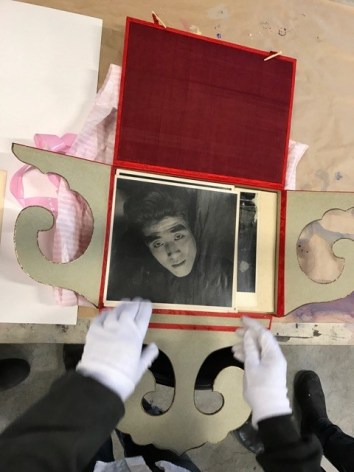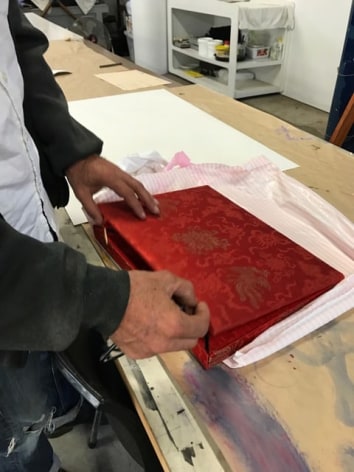Exhibition in partnership with The Trailer Project, Lone Goat Gallery and Byron Writers Festival
Lone Goat Gallery - July 28 2017
Byron Writers Festival - August 4 - 6 2017
MAMIE
Friday, 2 May 2003, is a date I will remember. I was in Paris curating the exhibition ‘Surfing Australia’ (from the collection of Nat Young), an exhibition held at the Australian Embassy in Paris. The beginning of this day was poor and stressful as we just learned that all the crates of the exhibition were blocked in customs in the Paris airport because of a strike. With nothing else to do, I decided to pay a visit to Mamie, my wife’s grandmother, who lived a few blocks down from the embassy. We met for a lunch in a brassery nearby where she ate everyday of the week. Mamie was a character.
A beautiful old woman, almost blind, forever stylish and slender, always with a cigarette at the tip of her finger, Pall Mall, no filter. She could be difficult, scathing, and always kept you on your toes. Deliciously politically incorrect, she liked to laugh and not take anything too seriously, but behind her stinging remarks and mocking tone, she was always trully interested in human connections. She had however no time for good sentiments, and we loved her for that.
During this lunch she told me about her first trip abroad, when she left for China following her wedding to Pierre de Beaumont, a young French diplomat. Mamie was an accomplished raconteur:
I was truly in Shangai during this lunch, reliving this troubled period of history (1940–1945) with Mamie as my guide. At the end of the meal, we walked back to her apartment where she showed me the box. When we opened it, it was a time capsule: not just because of the images it contained, but also from the smell that greeted us; a smell of China, tea, rice alcohol with a hint of coal and opium maybe. The images were striking, I thought then, it’s good! A few years after, Mamie died, and the box was left to us.
Writer: Pierre Chevalier 2017
THE BLUE LOTUS
The box contains 30 prints of Hedda Hammer Morrison made in the 30s. They include landscape views, architecture, portraits, street views, and images of street activity such as street barbers, magicians, gamblers and the like. An old China is recreated with this work, which has more to do with Tintin’s adventures in China told by Hergé in The Blue Lotus than with anything left today.
HEDDA HAMMER MORRISON
Hedda Morrison was born Hedda Hammer in Germany in 1908. As a young girl she contracted polio, which caused her to walk with a limp and required her to wear custom- made shoes for the rest of her life. This handicap, rather than inhibiting her, pushed her in her desire for adventure and travel. In 1929 she completed her secondary education and was sent to the University of Innsbruck in Austria to study medicine. After a few months she convinced her parents to allow her to enrol in the State Institute for Photography in Munich, but on completion of her studies, Hedda had difficulties finding paid work as a result of the Depression.
In 1933, she set out to travel to China in response to an advertisement in a photography journal. Between 1933 and 1938 she managed Hartung's, a German-owned commercial photographic studio in Beijing, and continued to work as a freelance photographer after her contract expired in 1938. Hedda's photographs of Beijing were well known, and she sold hundreds of prints and some thematic albums to wealthy overseas visitors and diplomats as souvenirs.
Hedda Hammer was very lucky: photography in Germany at this time was a hotbed of creativity and innovation. In particular, German photography in the 1920s and 1930s evolved into two highly articulate but divergent approaches: the school of objectivity and the school of experimental possibilities. The objective approach is well represented by the landscapes of Albert Renger-Patzszh, plant studies by Karl Bossfeldt, and stoic portraits by August Sander. On the other hand, examples of experimental Bauhaus aesthetic included bird’s eye views and photograms by Laszlo Moholy-Nagy, or oblique and disorienting portraits by T Lux Feininger. The work of Hedda Hammer is a mix of these two tendencies, and can even fall into the movement of new-realism photography, with close-up views, extreme vantage points, aerial views and unusual combinations of objects. Indeed, new realism sought to show familiar scenes in a novel way, and this effort comes out in her work.
In 1940 Hedda met Alastair Morrison and they married in Beijing in 1946. They left soon after due to the worsening political situation in China. After six months in Hong Kong, they relocated to Sarawak, in the north-west of the island of Borneo, where Alastair was appointed to the British Colonial Service and later became a district officer. Throughout her 20-year residence in Sarawak, Hedda accompanied Alastair on all his official journeys and made numerous independent photographic tours. From 1960 to 1966, Hedda worked for the Sarawak government in the photographic section of the Information Office. Her duties included taking photographs, establishing a photographic library and training government photographers. Hedda wrote two major books on Sarawak; Sarawak (1957) and Life in a Longhouse (1962).
In 1967 the Morrisons moved to Canberra, Australia. Hedda died in Canberra in 1991, at the age of 82.
The Harvard-Yenching Library holds around 5,000 photographs and 10,000 negatives taken by Hedda Hammer Morrison between 1933 and 1946. In 1993, the Powerhouse Museum in Sydney held an exhibition of her work, and houses a small collection of archival material relating to Hedda Hammer.
Adapted from: In her view: the photographs of Hedda Morrison in China and Sarawak 1933–67, exhibition catalogue, Powerhouse Museum, Sydney, Australia.
THE TRAILER PROJECT
Our purpose is to push the doors of perception open and encourage the permeation of art in public spaces. Our focus is placed not only on the content of our exhibitions but on a reflection of how to display and communicate ideas.
This mobile structure is an art space devoted to encouraging all disciplines.
Using the trailer, we are able to create an enclosed space that offers intimacy and allows artists to curate unique exhibitions. The trailer also allows for multimedia projections, opening dimensions beyond its confines.
Inspired by the history of mobile movie theatre, the trailer project will reach near and far communities and in doing this, it will create a reciprocated exchange of ideas.
https://www.thetrailerproject.com

